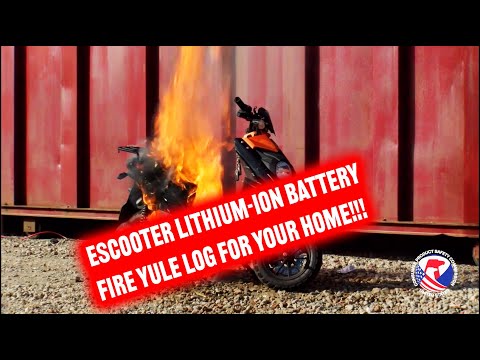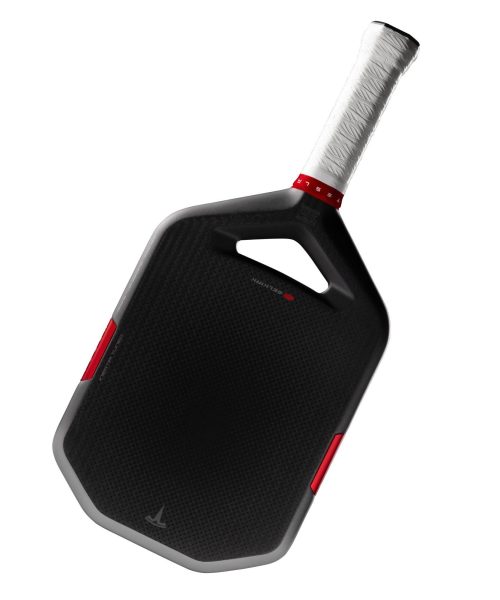Nissan launched the XTerra, a spirited compact body-on-frame SUV made for adventure, more than two decades ago. I remember seeing a sunny yellow model in its first year of production, and it captured my attention with its quirky, yet competent personality. The brand stopped building the XTerra in 2015, and its other SUVs in its lineup didn’t match up with the same off-road ethos…until now. Nissan’s newest Armada has emerged with a revised face and a dirt-ready PRO-4X trim for the first time ever.
Downsizing engines seems to be a growing trend among automakers to boost efficiency, and the Armada gets the miniaturization treatment too. The SUV is motivated by a new turbocharged V6 engine, boasting 25 more horsepower and 103 more pound-feet of torque than the outgoing V8. Sharing a platform with the newest Infiniti QX80, the new frame has 25 percent greater torsional rigidity and 57 percent increased lateral stiffness over its previous model. As a result, Nissan promises, the Armada provides a better ride than ever.
Upgraded technology is the other major piece of the improvements equation for the Armada. A complete “Invisible Hood” camera setup enables multiple views to be stitched together via code to create a virtual view through the engine bay. Another camera option offers a wide angle view, and yet another gives me the option to spin the virtual vehicle and see it from every side.
On a frozen off-road course in Franklin, Tennessee, I put the updated Armada to the test. Blindfolded.
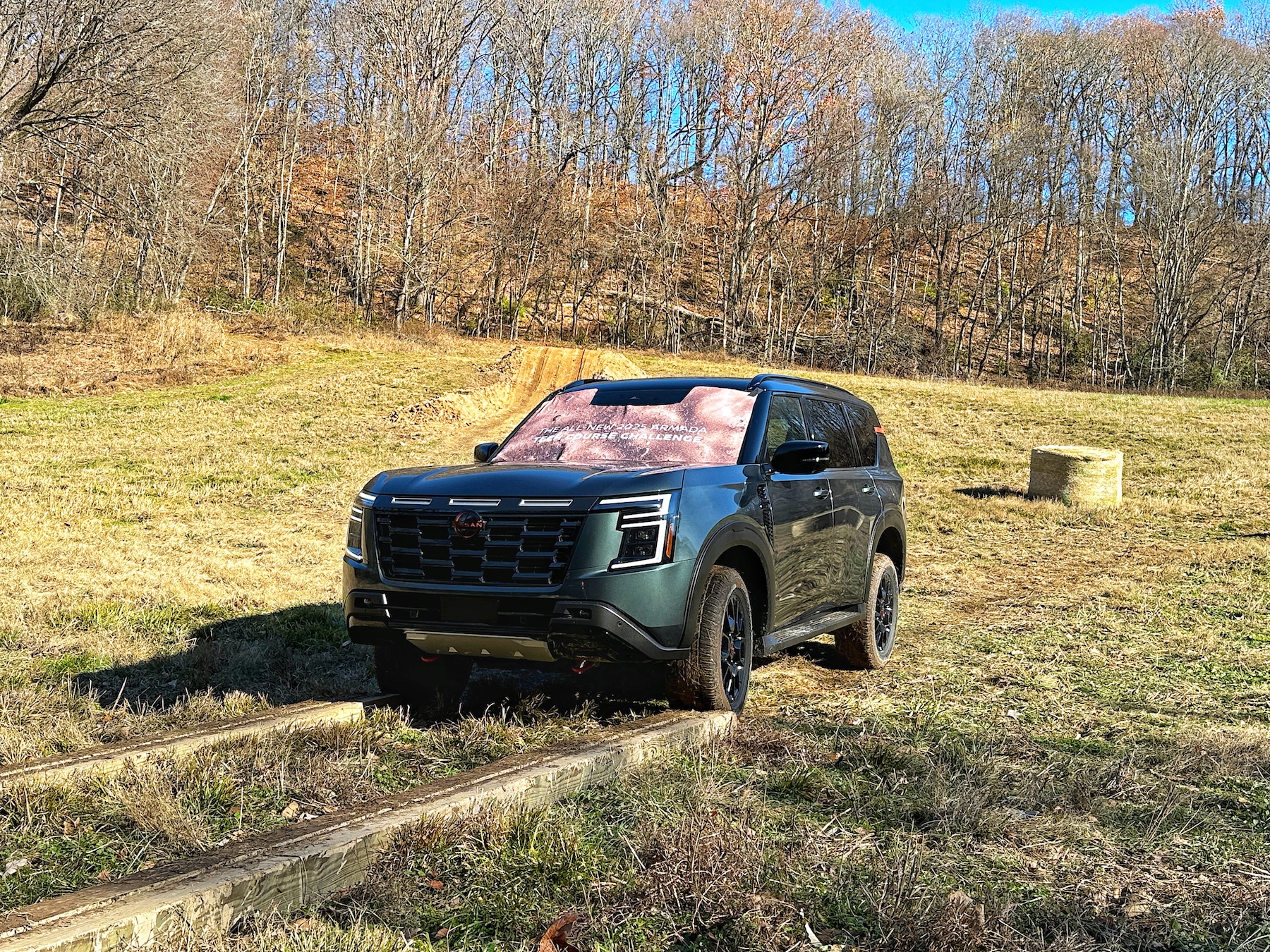
The GT-R lends power to the Armada engine
It has been six years since the Nissan team started working on the 2025 Armada, shortly before the massive surge in popularity of overlanding and off-roading. Brent Hagen, senior manager of product planning for Nissan, has watched the Armada develop over that time period.
In the rest of the world, Nissan sells the rugged Patrol, a popular off-roader. While it might have been tempting to just launch the Patrol name in the U.S. and drop the Armada, the latter has better brand recognition on this side of the pond, Hagan says. Instead of replacing it with an American Patrol, the Armada got a glow-up. That’s especially true for the PRO-4X trim, which comes with higher ground clearance, fresh all-terrain tires, and underbody skid plates. An electronic locking differential stops the wheels from spinning at different speeds (a helpful feature when attempting to exit slippery or challenging terrain), and an increased approach angle gives the new Armada more grace when climbing a ramp or incline before the point it will scrape the front bumper or skid plate.
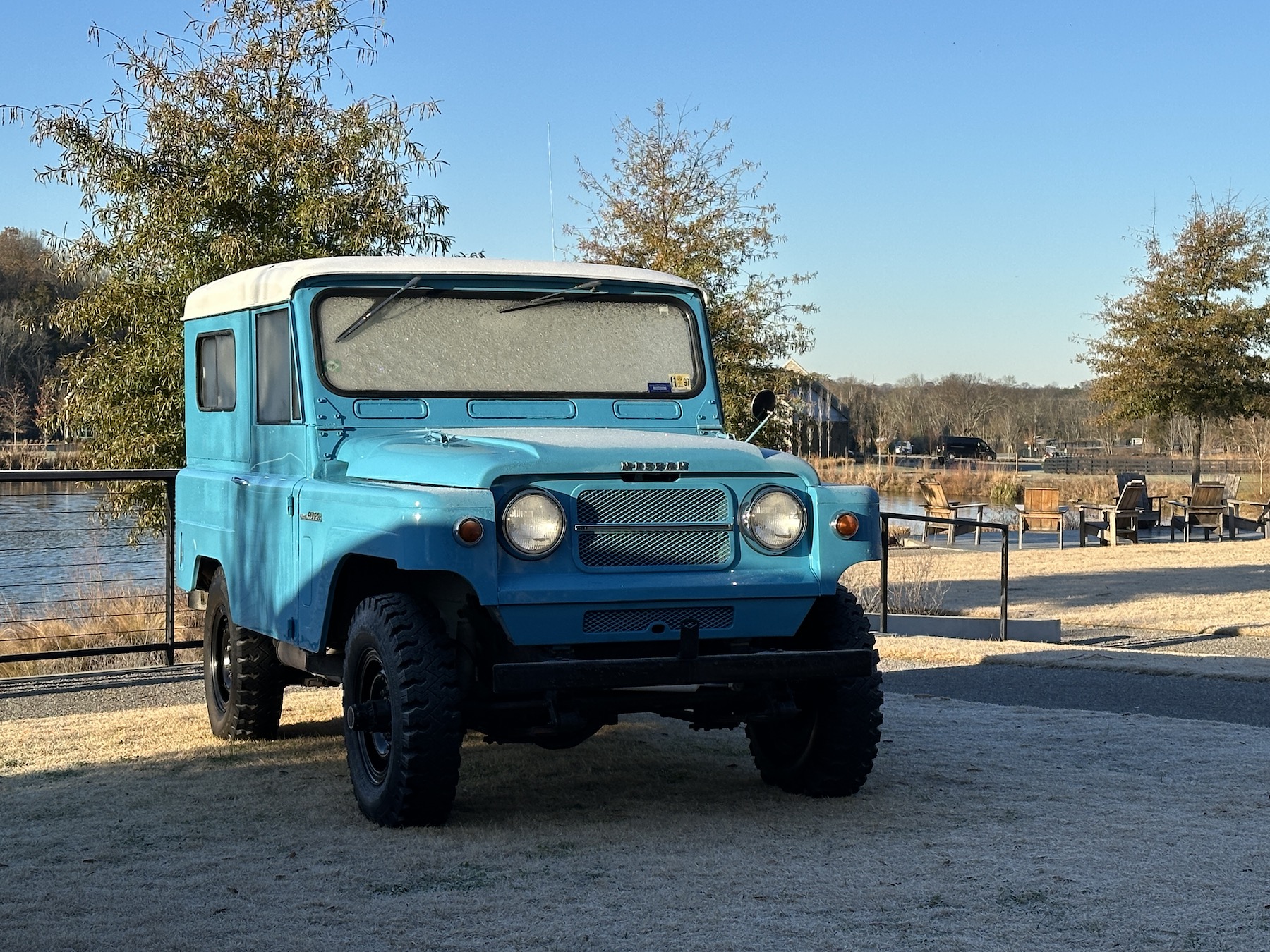
A twin turbo 3.5-liter V6 engine generates 425 horsepower and 516 pound-feet of torque in the new Nissan SUV. Within the company, the Armada engine goes by the moniker VR35DDTT and is an evolution from the one inside the powerful Nissan GT-R sports car (affectionately called “Godzilla”). Happily, the 2025 Armada’s powerplant doesn’t require premium fuel even though the GT-R’s does. The Armada’s engine is tuned for a much larger vehicle, and as such, the Armada’s engine grabs 25 more horsepower and 103 additional pound-feet of torque than the outgoing naturally-aspirated V8.
To allow for deeper water fording when hitting the mountain trails, Hagan explains that Nissan engineers had to ensure the turbochargers were situated above the maximum water line of 27.5 inches.
“The air intake is above the turbo level anyway, but we wanted to make sure the turbos aren’t sucking up water,” Hagan says.
Tech updates
Spanning the interior of the new Armada, dual 14.3-inch screens display navigation, Apple CarPlay and Android Auto, and other apps. It’s a futuristic setup, one that Hagan says reminds him that he is a ‘70s kid who dreamed about being Han Solo in Star Wars, jumping into the cockpit of the Millennium Falcon and taking off. The screens are matched to an optional 12-speaker premium audio system from Klipsch, but it doesn’t have the Individual Audio setting from the more upscale Infiniti QX80.
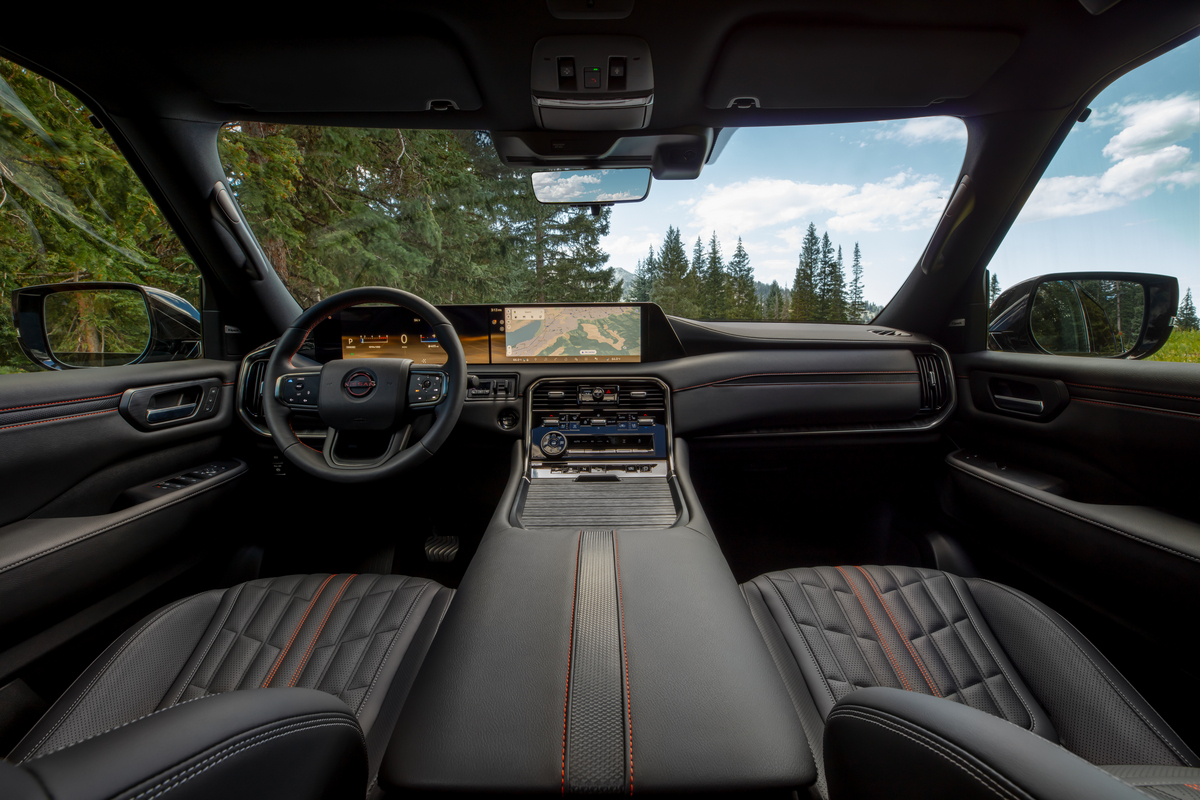
A segment first in the Armada is biometrically-cooled seats that use an headliner-mounted infrared sensor to measure the surface temperature of passengers and adjust the heating and air conditioning settings appropriately. Passengers sit in Nissan’s comfortable Zero Gravity seats, inspired by NASA for optimal body positioning. Massaging, heated, and ventilated, the seating may not be as posh as those inside the Bentley Bentayga EWB, but the same principle is in play.
Finally on the tech front, the Armada’s “invisible hood” camera system stitches together various angles to create a full picture of everything around the car. Forza (or way before that, Pole Position) video game players will appreciate the virtual perspective of driving through the camera. It comes in handy when the windshield is frozen solid, for instance, or you’re heading down a rocky hill. Nissan had us test the technology in an interesting and somewhat unsettling way, at first, by obscuring up the windshield with a blackout cover. Piloting the Armada between hay bales and across a simulated “bridge,” I could see everything around me through the lenses of several cameras and a smart computer inside the vehicle. It’s leaps and bounds ahead of the backup-only camera on many cars today.
I ask Hagan if Nissan accomplished what it had set out to do with the next-gen Armada, and he says yes, emphatically.
“I mean, we always have a Christmas wish list of all the things we want to do, and that’s just the natural planning process,” he says. “Sometimes you find out that’s not technically feasible. Or maybe the customer doesn’t appreciate it like we thought when we go talk to them; there’s always things on the cutting room floor. But directionally, is this the vehicle that we sought out to build? Absolutely.”

